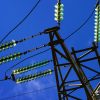Traffic sound levels increase risk of stroke
An international panel of noise experts from the Copenhagen Cancer Institute, the Swiss Institute of Tropical Medicine and Public Health, the Perelman School of Medicine at the University of Philadelphia, and the Department of Cardiology at the University of Philadelphia Medical Center The University of Mainz analyzed the latest epidemiological data and found convincing evidence that traffic noise can be dangerous. The fact is that traffic noise is closely related to cardiovascular and cerebrovascular diseases.

Epidemiological studies have shown that road noise, such as road noise, railroad noise, and aircraft noise, increases the risk of cardiovascular disease and mortality, indicating the development of cardiometabolic diseases such as coronary heart disease, heart failure, stroke, and diabetes. According to WHO, more than 1.6 million years of healthy life are lost each year in Western Europe due to traffic noise.
Traffic noise at night, in particular, leads to frequent interruptions and reductions in sleep duration, increased hormone levels and increased oxidative stress in the vascular system and brain. All these factors lead to increased formation of free radicals. These factors can contribute to vascular abnormalities, inflammation and increased blood pressure, thereby increasing the risk of cardiovascular disease.
The authors provide an updated review of epidemiological studies of the effects of traffic noise on cardiovascular risk factors and disease, discuss mechanistic findings from recent clinical and experimental studies, and propose new risk markers to address noise-induced cardiovascular effects in the general population. A recent analysis of road noise and cardiovascular disease, included in the review article, convincingly demonstrates that for every 10 dBA, the risk of developing cardiovascular diseases such as heart attack, stroke and heart failure increases significantly by 3.2%.
The authors also explain in detail the possible influence of noise on changes in gene networks, epigenetic pathways, circadian rhythm, neuro-cardiovascular axis signaling, oxidative stress, inflammation and metabolism. Finally, current and future noise protection strategies are described and the current evidence on noise as a risk factor for cardiovascular disease is discussed.
«Given that even after the end of the COVID-19 pandemic, an increasing proportion of the population is exposed to harmful traffic noise, noise control efforts and laws are critical to the future of public health,” — sums up Thomas Münzel.
























































Свежие комментарии